Top Rankings
Clinton School District ranks among the top 20% of public school district in Connecticut for:
Category
Attribute
Student Attention
Lowest student:teacher ratio (Top 1%)
For the 2025 school year, there is 1 public preschool serving 546 students in Clinton School District. This district's average pre testing ranking is 6/10, which is in the top 50% of public pre schools in Connecticut.
Public Preschool in Clinton School District have an average math proficiency score of 47% (versus the Connecticut public pre school average of 35%), and reading proficiency score of 57% (versus the 42% statewide average).
Minority enrollment is 30% of the student body (majority Hispanic), which is less than the Connecticut public preschool average of 59% (majority Hispanic).
Overview
This School District
This State (CT)
# Schools
3 Schools
345 Schools
# Students
1,454 Students
132,954 Students
# Teachers
146 Teachers
10,546 Teachers
Student : Teacher Ratio
10:1
10:1
District Rank
Clinton School District, which is ranked within the top 50% of all 197 school districts in Connecticut (based off of combined math and reading proficiency testing data) for the 2021-2022 school year.
The school district's graduation rate of 90-94% has stayed relatively flat over five school years.
Overall District Rank
#100 out of 200 school districts
(Top 50%)
(Top 50%)
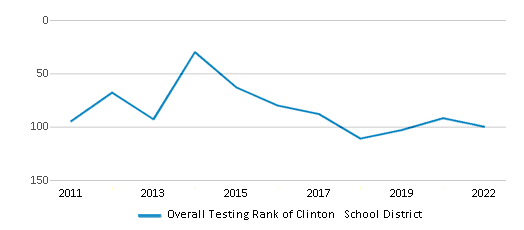
Math Test Scores (% Proficient)
47%
40%
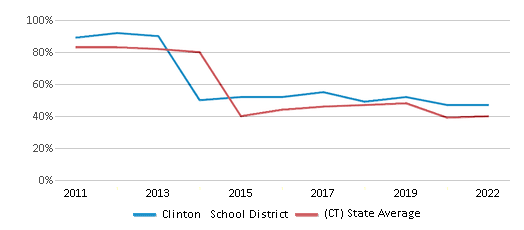
Reading/Language Arts Test Scores (% Proficient)
57%
50%
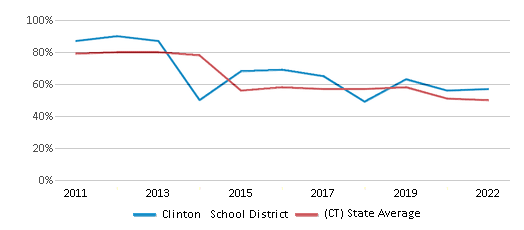
Science Test Scores (% Proficient)
56%
47%

Graduation Rate
90-94%
89%

Students by Ethnicity:
Diversity Score
0.46
0.70
# American Indian Students
2 Students
381 Students
% American Indian Students
n/a
n/a
# Asian Students
42 Students
6,332 Students
% Asian Students
3%
5%
# Hispanic Students
356 Students
44,965 Students
% Hispanic Students
24%
34%
# Black Students
14 Students
19,832 Students
% Black Students
1%
15%
# White Students
1,011 Students
54,707 Students
% White Students
70%
41%
# Hawaiian Students
n/a
132 Students
% Hawaiian Students
n/a
n/a
# Two or more races Students
28 Students
6,568 Students
% of Two or more races Students
2%
5%
Students by Grade:
# Students in PK Grade:
65
14,518
# Students in K Grade:
85
19,819
# Students in 1st Grade:
88
19,906
# Students in 2nd Grade:
113
20,278
# Students in 3rd Grade:
100
15,997
# Students in 4th Grade:
96
16,056
# Students in 5th Grade:
107
13,209
# Students in 6th Grade:
110
5,100
# Students in 7th Grade:
100
3,978
# Students in 8th Grade:
113
3,865
# Students in 9th Grade:
104
67
# Students in 10th Grade:
126
64
# Students in 11th Grade:
126
43
# Students in 12th Grade:
121
54
# Ungraded Students:
-
-
District Revenue and Spending
The revenue/student of $30,518 is higher than the state median of $26,157. The school district revenue/student has grown by 7% over four school years.
The school district's spending/student of $29,162 is higher than the state median of $25,225. The school district spending/student has grown by 7% over four school years.
Total Revenue
$44 MM
$12,920 MM
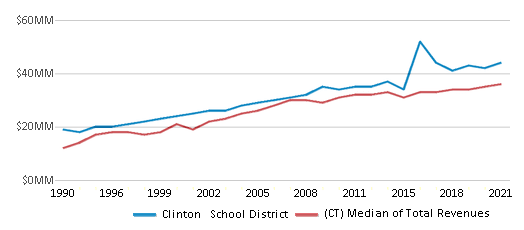
Spending
$42 MM
$12,459 MM

Revenue / Student
$30,518
$26,157
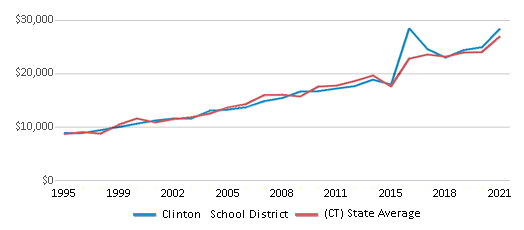
Spending / Student
$29,162
$25,225
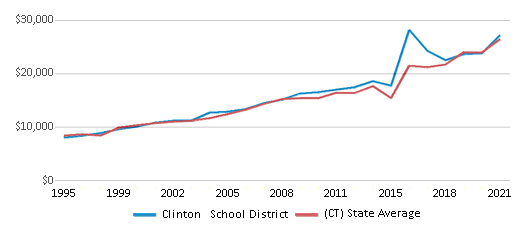
Best Clinton School District Public Preschools (2025)
School
(Math and Reading Proficiency)
(Math and Reading Proficiency)
Location
Grades
Students
Rank: #11.
Lewin G. Joel Jr. School
(Math: 45-49% | Reading: 55-59%)
Rank:
Rank:
6/
Top 50%10
137a Glenwood Rd.
Clinton, CT 06413
(860) 664-6501
Clinton, CT 06413
(860) 664-6501
Grades: PK-4
| 546 students
Recent Articles

Year-Round Or Traditional Schedule?
Which is more appropriate for your child? A year-round attendance schedule or traditional schedule? We look at the pros and cons.

Why You Should Encourage Your Child to Join a Sports Team
Participating in team sports has a great many benefits for children, there is no doubt. In this article you will learn what those benefits are.

White Students are Now the Minority in U.S. Public Schools
Increasing birth rates among immigrant families from Asia and Central and South America, combined with lower birth rates among white families, means that for the first time in history, public school students in the United States are majority-minority. This shift in demographics poses difficulties for schools as they work to accommodate children of varying language abilities and socio-economic backgrounds.





